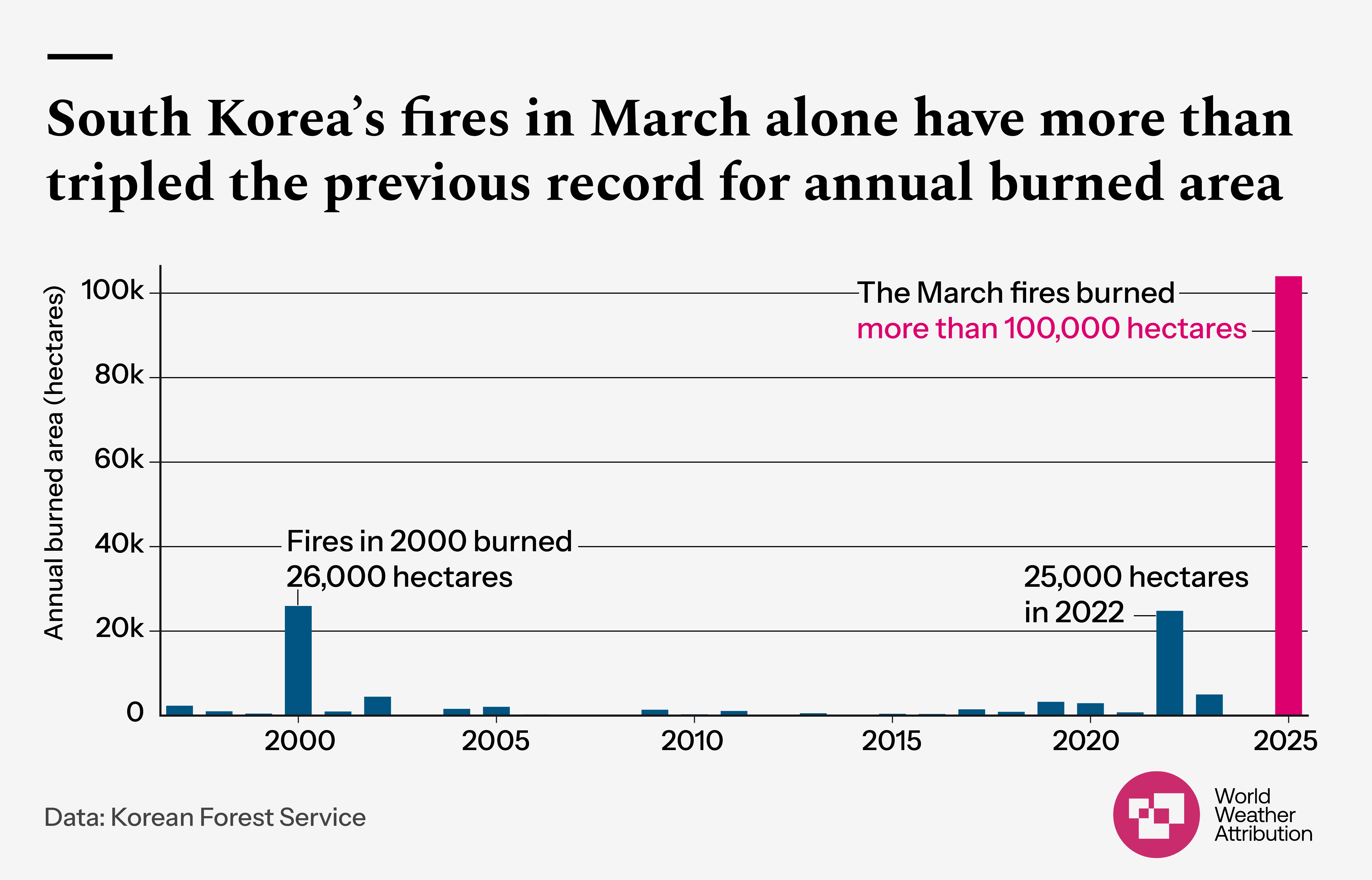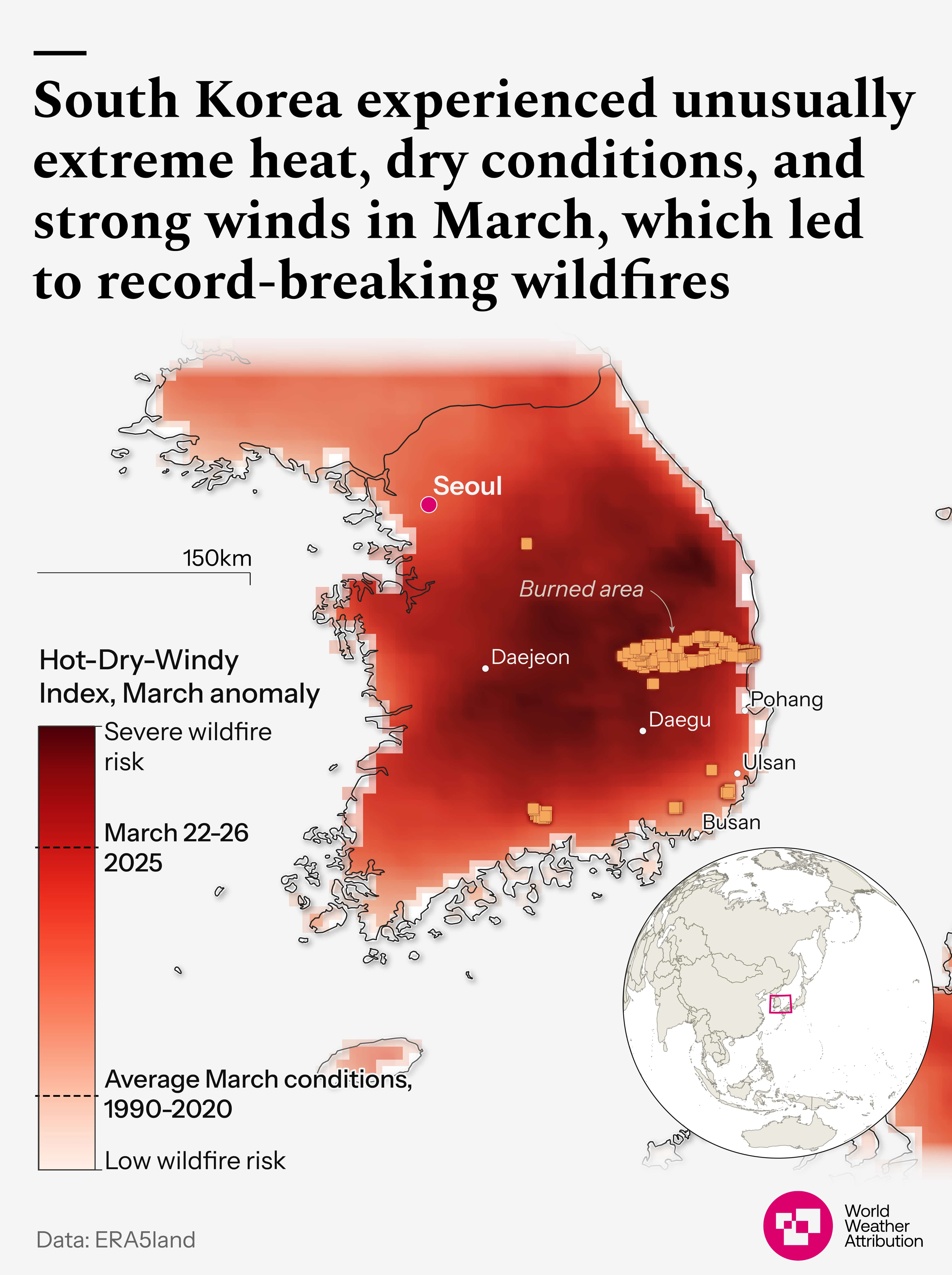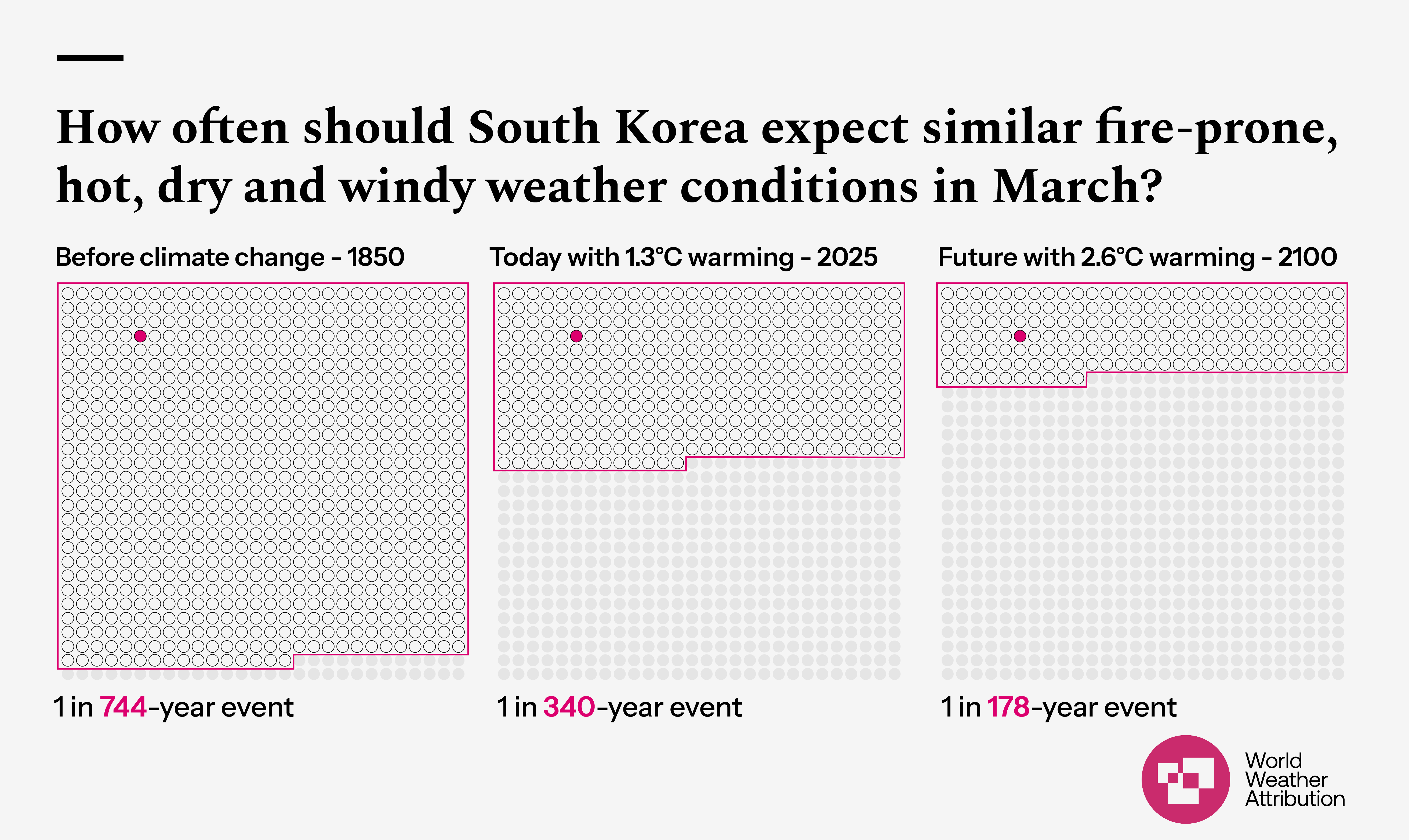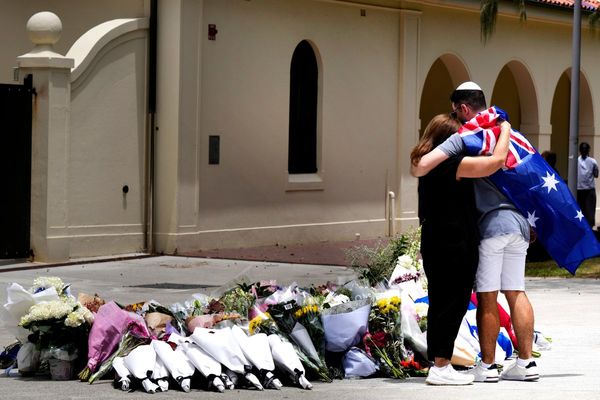Human-caused climate crisis doubled the chances of the extreme weather that fuelled South Korea’s deadliest wildfires, a new study has found.
The fires, which broke out in southeast Korea on 22 March, killed at least 32 people and destroyed 5,000 buildings, including homes and centuries-old temples.
The fire burnt over 104,000 hectares, nearly four times the previous national record set in 2000.
A rapid analysis by World Weather Attribution has found that the hot, dry and windy conditions in March were about 15 per cent more intense and twice as likely because of warming caused mainly by burning fossil fuels.
“This is a mind-blowing increase,” said Dr Clair Barnes, researcher at the Centre for Environmental Policy, Imperial College London.
“Low rainfall and high temperatures dried out trees and set the scene for these explosive blazes,” she says.
“With every fraction of a degree of fossil fuel driven warming, we’ll continue to experience ever more extreme weather events.”

The analysis warns that if global temperatures rise by 2.6C by 2100 – a likely outcome under current emissions trajectories – such fire-prone weather will become another 5 per cent more intense and twice as likely again.
“The scale and speed of the fires were unlike anything we’ve ever experienced in South Korea,” professor June-Yi from Pusan National University, one of the authors, said.
“This study adds to a growing body of science showing how climate change is making weather conditions more favourable to dangerous wildfires.”

She added that while wildfires in South Korea are more often sparked by human activity than natural causes like lightning, “it is still possible to prevent severe wildfires with careful and systematic forest management”.
South Korea’s decades-long tree-planting efforts have helped reverse deforestation and boosted biodiversity, but the March wildfires have sparked concerns about whether dense forest cover near settlements may also increase wildfire risk.
Much of the damage occurred in forests located close to residential areas. Around 11 per cent of South Korea’s forest cover falls near populated zones, and researchers stress the importance of building fire breaks to reduce the risk of repeat disasters.
“Continuous tree cover is more likely to experience intense ‘crown’ wildfires that can spread rapidly through the canopy,” the report said.

“More trees may have provided more fuel for the fires in some regions,” said wildfire researcher Theo Keeping of Imperial College London, “but a lack of rainfall and extreme heat created the conditions for South Korea’s largest-ever fires”.
The fires followed months of unusually high temperatures and low rainfall. Professor Young-Min Yang of Jeonbuk National University explained that a persistent high-pressure ridge carried hot, dry air from inland China to the Korean Peninsula, driving temperatures and fire risk sharply upward.
“Many locations recorded new March daily maximum temperature records,” he said.
March fire weather of this intensity can now be expected roughly once every 300 years, the study found, but those odds are shortening as the world warms.

Almost all wildfires and heatwaves in recent years have been more extreme, with analysis from scientists, including those from WWA, finding human-induced climate crises playing a major role.
“A decade ago, the influence of climate change on events was less clear. But now, it's undeniable,” said Dr Friederike Otto of Imperial College London, co-founder of WWA.
“These fires show why we need to prepare for extreme, unprecedented weather,” said Maja Vahlberg from the Red Cross Red Crescent Climate Centre. “Homes and roads can be rebuilt, but people in South Korea have lost loved ones and centuries-old temples that are irreplaceable.”
UK is not ready for coming climate ‘disaster,’ government advisers warn
New Jersey wildfire mapped: Blaze tears over more than 15,000 acres as teen charged
More than 80% of world’s coral reefs hit by worst bleaching event in history
David Attenborough to release new feature film to mark 99th birthday
Donald Trump protest art created on beach near Turnberry golf resort
Charities call for wind farm to be blocked as thousands of bird deaths feared







